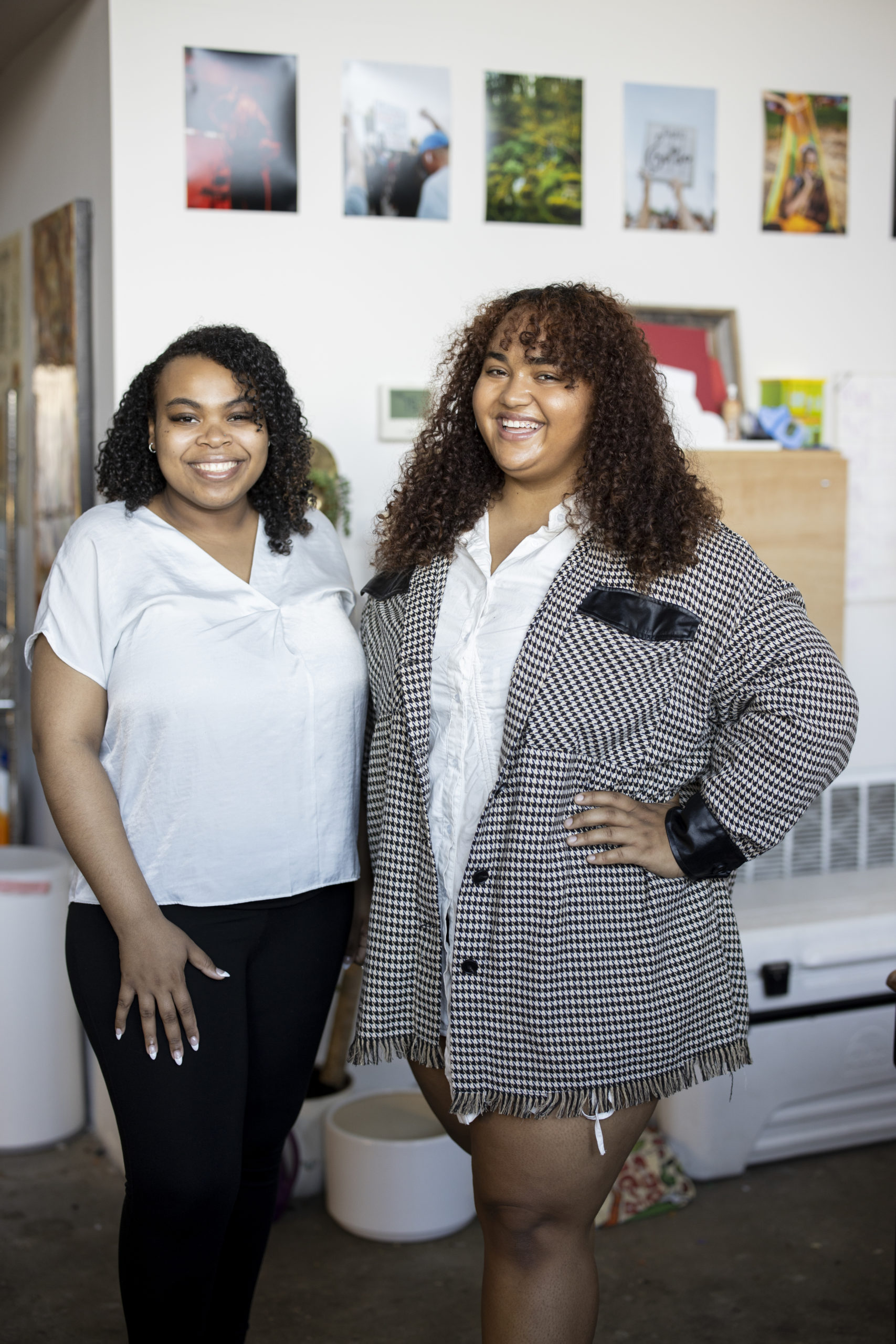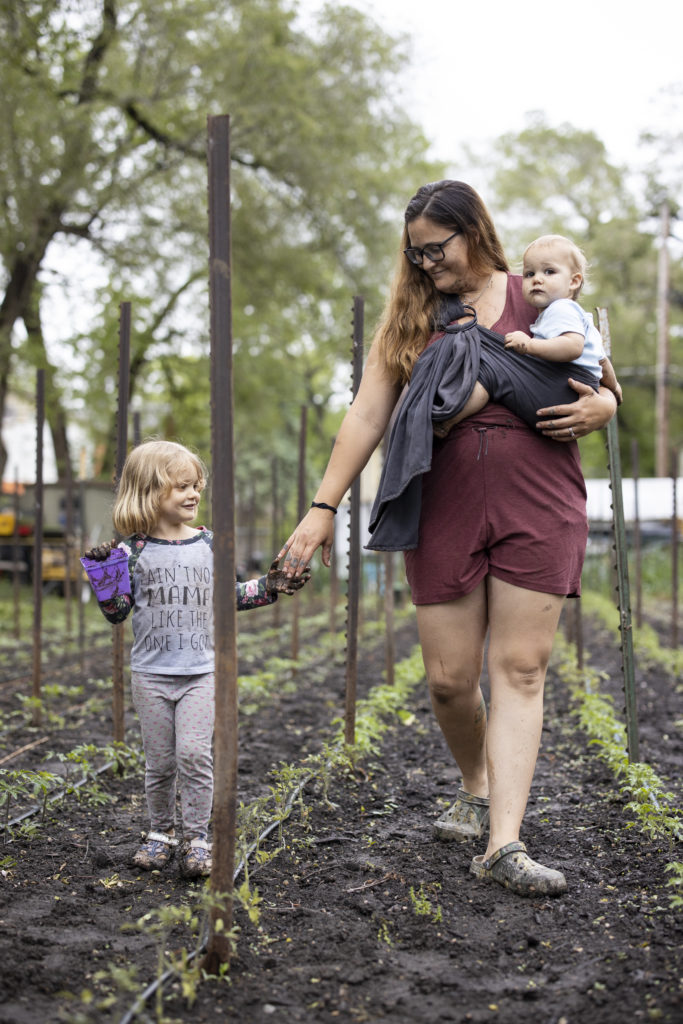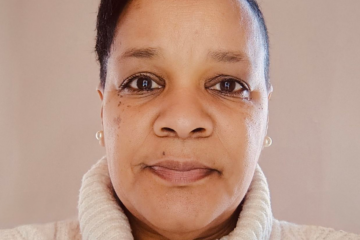Solidarity, not charity: A look at mutual aid in Iowa

Editor’s note: This is part one of a two-part series on mutual aid organizations in Iowa produced by the Business Record in conjunction with our Fearless initiative, which focuses on women and gender topics with an intersectional approach. While mutual aid organizations are not new, the work has become more known, thanks in part to social media and renewed calls to action in the social justice space. Mutual aid organizers strive to create better communities for all, which affects all sectors of our state. Thousands of Iowans contribute to and lead mutual aid efforts – and we could only talk to a handful of them for this series. Have a story idea for future coverage? Reach out to Business Record Editor Emily Barske at emilybarske@bpcdm.com
By Emily Blobaum, Fearless editor and Kate Hayden, Business Record staff writer
Google searches for “mutual aid” saw sharp increases first as the pandemic raged in the U.S. and then again after the killing of George Floyd in 2020. But though the term is newly recognized and the work of organizers has certainly surged, mutual aid has a long history.
What is mutual aid?
Mutual aid is collective coordination to meet needs, usually from an awareness that the systems that are currently in place aren’t going to meet them, Dean Spade, an activist and law professor, wrote in his book “Mutual Aid: Building Solidarity During This Crisis (and the Next).”
Madeleine Terry, an organizer in Des Moines who helped start Des Moines Mutual Aid two years ago, thinks of mutual aid in the context of a house fire.
When the house is burning, mutual aid is everyone getting together with garden hoses immediately, whereas charity is waiting for an established entity like the fire department to arrive, she said.
“Mutual aid is about us aiding one another to solve problems in our community and not waiting for charities or the government to come in,” Terry said. “It’s people in the community sharing their resources with other people. We don’t employ experts, we don’t wait for experts. It’s all about what we can do.”
Mutual aid organizers adopted the slogan “Solidarity, not charity” to emphasize the focus on helping others with no strings attached.
In Iowa, organizers have pooled together resources for a variety of community needs for decades – whether it was during the farm crisis or during the current pandemic.
Monika Owczarski is an organizer behind the Sweet Tooth Community Fridge, a communal space in the River Bend neighborhood of Des Moines where anyone can donate or access free food 24/7.
She believes mutual aid removes deservedness and hierarchy around whether you meet the right income requirements or are disadvantaged enough.
“[Mutual aid] means meeting people where they’re at and listening and seeing people as full humans and fully worthy of whatever they’re asking for,” Owczarski said. “The people utilizing the fridge get to decide how much they need and how much they want. There’s no signup and there’s no registration. The only prerequisite is that you’re hungry or your family is hungry.
“When you have so much gatekeeping towards aid because of a board or grants to fulfill – and that isn’t necessarily wrong or right – but when you strip that all away, many people feel empowered and feel community ownership over this resource. Whereas at a nonprofit, there are people in nice offices who wear nice clothes who get to decide whether you get things or not. A resource like this, we’re coming together.”
Zakariyah Hill is the co-founder and executive director of the Supply Hive, a nonprofit organization that seeks to nourish the community. She said the difference between charity and mutual aid organizations is feeling – or the absence of feeling – shame.
“I do not feel shame in calling upon my community and peers for help. When receiving aid from charitable organizations, it just felt like a handout. Being in the mutual aid space, I really have connected with my community more. I know where everything is coming from and where it’s going,” she said.
Owczarski said mutual aid builds community through fostering relationships, but it also requires an understanding that there’s a political component at play, she said.
“The reason for a lot of people’s lack of resources is not because of a failing of themselves, it’s not because they’ve done something wrong. It’s that the systems of government currently in our society are fundamentally flawed and are not able to provide people with what they need,” Owczarski said.

Mutual aid as a form of social justice
Mutual aid is often tied to social justice, as organizers work to meet the needs of underrepresented people who face inequity when society’s systems have failed to do so.
Based around northwestern Iowa, the Great Plains Action Society began coalescing in 2014 as founder Christine Nobiss organized Indigenous communities for environmental and social justice action. The organization was formally created in 2016 to support Indigenous action across the Great Plains of North America, spanning from the Gulf of Mexico into the Canadian provinces of Alberta and Saskatchewan.
Trisha Etringer, operations and digital media director for the Great Plains Action Society, lives in Sioux City. But she and other members were quickly connected to Des Moines Mutual Aid volunteers at the start of 2020, which helped the team begin their own household supplies drives for Native peoples living in the region. Community-led support is not a new tool for Indigenous people, Etringer said.
“When [Indigenous organizers] talk about mutual aid, we’re in a sense combating capitalism because we’re not feeding into the big corporations, we’re not depending on the government to basically help us out. We’re doing it by ourselves,” Etringer said. “We’ve done that before the first contact with settlers; we were self-sustaining and provided for ourselves. … That capitalistic system was never set up for us to survive. We’ve had our buffalo killed, [which] depleted our food source, and from there it was a snowball. We’re living through those effects from what happened so long ago.”
Volunteers at the Great Plains Action Society collected basic daily supplies including toiletries, food, clothing and cleaning supplies in the Sioux City metro region, where they serve members of the Rosebud Sioux, Yankton Sioux, Omaha and Winnebago tribes.
“[At the start of the pandemic,] there was a big scare for our Native communities, especially with the urban Native community,” Etringer said. “For a lot of our tribal members, you have to live on the reservation to get assistance.”
Some people don’t have transportation, making it difficult to get back to their homelands to get assistance, Etringer said.
“We wanted to provide that extra safety and alleviate the stress of ‘Are we going to get food or are we going to get cleaning supplies?’ We wanted to alleviate that so they didn’t have to make the difficult choice, especially when they have kids.
“Going forward, we’ll be able to be more interactive [with the community]. We’re still in the late stage of the pandemic, so we’re very cautious.”
Using social media as a tool
The Great Plains Action Society team uses Fundly.com for virtual fundraising to support their ongoing initiatives, including the Missing and Murdered Indigenous Relatives fund, which supports legal fees, memorials and the travel costs for the families and survivors of domestic abuse.
Video testimonials have been especially powerful in spreading their work, Etringer said.
“Our youth do TikToks. I’m still learning those things too, but it’s really fun. It’s the coming together of generations, and they’re teaching me how to do it,” she added. “I never knew that social media would be this big, powerful tool.”
Hill and Supply Hive co-founder Aaliyah Quinn agree that social media plays a large role in the Supply Hive’s efforts in both raising awareness and collecting donations.
“Social media is definitely where our upbringing was. We started off with one Instagram post and now here we are, doing a lot of big things,” Quinn said.
The Supply Hive uses apps like CashApp and Venmo for fundraising, saying it’s easier.
“Collecting the $2, $3, $5 from hundreds of people really adds up quick. The QR codes also make it easy to connect with people quickly,” Hill said.
Owczarski said social media is a double-edged sword when managing the Sweet Tooth Community Fridge.
On one hand, social media is a useful tool to disseminate information about what the fridge does or doesn’t have at a given moment. But on the other hand, the fridge operates just fine outside of social media, she said.
“In 2021, I feel like it’s a requirement to have some social media, but I struggle sometimes to post about it, because things run without it. People will come regardless of if people post that it’s stocked. I don’t need to publicize it. It’s really great to share things, but at the same time, a lot of people who use the fridge are not on social media.
“I feel very protective of the people who use this fridge. I don’t want anyone to ever feel like I’m using their struggle or their hardship to garner donations,” she said. “We have a rule that you can’t take pictures of anyone utilizing the fridge, and if you do, you will be asked not to come back.”
Working with other communities
The Great Plains Action Society is developing partnerships with Unity & Action in South Sioux City, Neb., and members of the American Friends Service Committee. Both organizations are working heavily in immigrant communities, where many community members work alongside Indigenous community members in the meatpacking plant workforce.
Holding Indigenous-led initiatives “basically acknowledges that we’re here, that we had some sense of how this world operated before our first contact, and we took care of that. We honored that, and we still do those things today,” Etringer said. “That’s our own spin on mutual aid and our perspective. We want to make sure we always put children and our elderly first, but we always want to make sure that all of our own is taken care of. That doesn’t mean we’re going to just be inclusive of ourselves, but we want everybody — especially people of color, because this history of America hasn’t always done that.”
They don’t like to encroach on anybody else’s work, Etringer said, but they put themselves out there to help. The past year working with other communities of color highlighted successful collaboration,
she added.
“It can be challenging because it’s not the oppression Olympics. It should never be that way — it should be ‘This is what happened to your people, this is what happened to my people, that’s really similar. How can we help each other now heal from that, and how can we help our future generations?’”
The Supply Hive makes a point to partner with other mutual aid organizations and nonprofits in the community, including Edna Griffin Mutual Aid, North Des Moines Mutual Aid, Eat Greater Des Moines, the Young Women’s Resource Center and Art Force Iowa.
“We can’t do it all. There’s power in numbers and there’s only so much we can do,” Hill said. “It’s really important to do something and do it well, rather than only giving half your effort. There’s plenty of people and organizations that are good at a lot of things, so keeping communication and relationships open is important.”
What’s the history of mutual aid?
The idea of mutual aid has been around for centuries. The term is thought to have been popularized by Russian anarchist philosopher Peter Kropotkin in the late 19th century, who argued that cooperation was the driving force behind evolution, rather than competition.
Prominent examples of mutual aid in action include the Black Panther Party’s free breakfast program, disaster relief efforts after Hurricane Katrina, and most recently the sharing of resources throughout the COVID-19 pandemic and the nationwide protests against police brutality.
“Crisis tends to bring about the best in people, whether it’s a personal loss or tragedy,” said Paul Lasley, professor of sociology at Iowa State University.
In Iowa, the farm crisis of the 1980s and destruction from floods or tornados in the last few decades are visible examples of mutual aid in communities, Lasley said.
“The key is oftentimes leadership — taking that idea, then adding and engaging others … to show some initial success. Then, there’s nothing like an initial success that will cause other people to get involved,” he said.
Lasley said one of the challenges in community organizing is always ensuring the strength of the base. “The way you do that is to ensure that everybody’s voice counts.
“Oftentimes the problem becomes that people want to jump to the end. They’re anxious, energized, excited, [but] they fail to think about ‘OK, who else are the important stakeholders in our effort? Who else might we partner with, who else has resources, experience or knowledge that can help us?’ Equally important is who is going to be opposed. … You’ve got to anticipate what the barriers are going to be, who’s going to say, ‘That’s not needed, that’s not important.’”
One of the barriers throughout mutual aid’s history is how it’s perceived – and sometimes those perceptions are political in nature.
“When farmers organized in the 1920s and 1930s there were people who said, ‘This is a step towards socialism, and cooperatives should have no role.’ There’s always going to be this tension, but effecting social action requires some clearly stated, articulate goals, and developing an action plan,” Laseley said. “That’s what’s going to create sustainability in any kind of social movement.”


